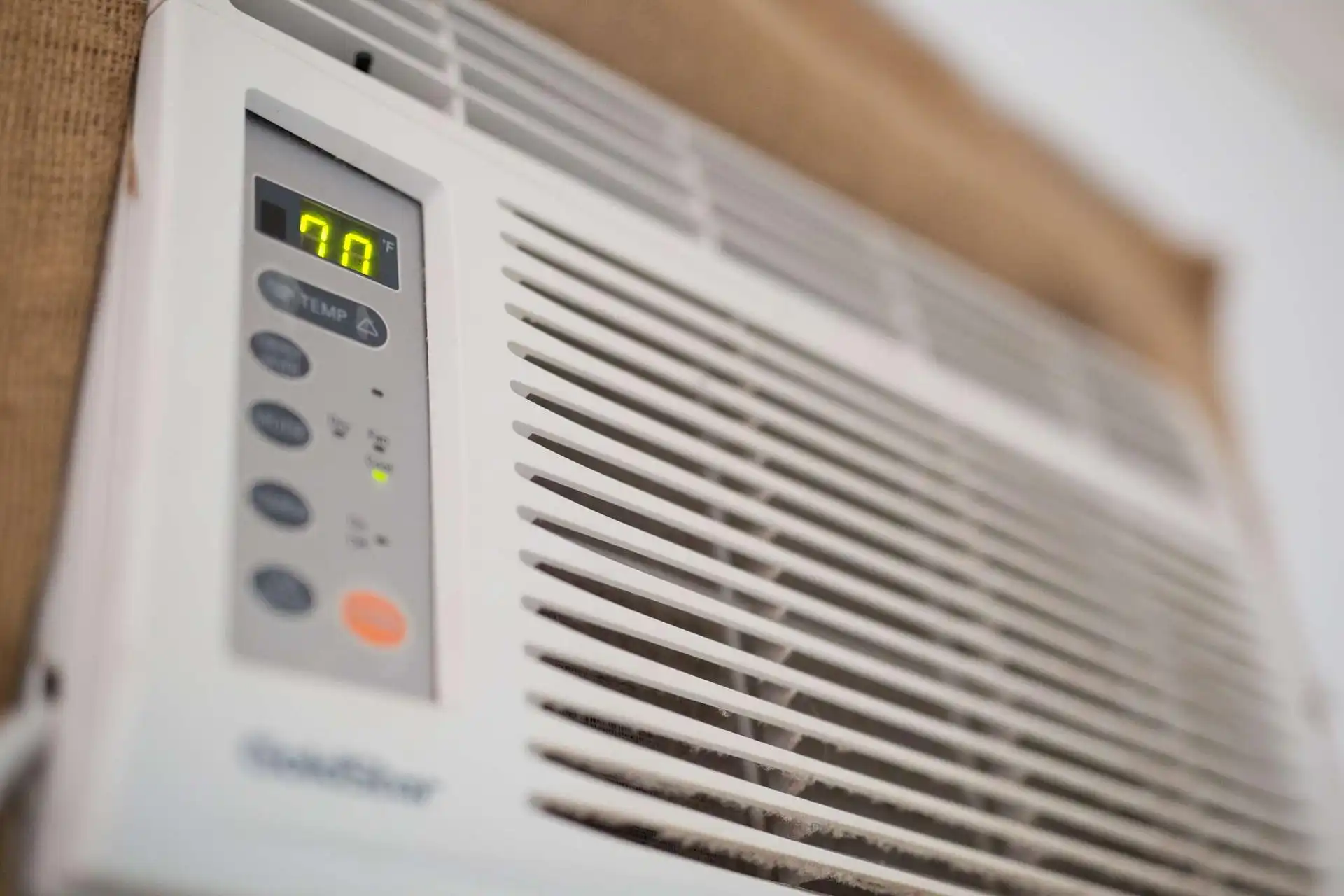When choosing the correct amperage for your window AC unit, understanding the basics of electricity and how it relates to your appliance is critical. Calculating the required amperage based on the unit’s specifications and considering factors like voltage and energy efficiency can ensure optimal performance while minimizing energy consumption.
Follow manufacturer recommendations and consider consulting with a professional if needed. Implementing energy-saving tips such as proper installation, regular maintenance, and programmable thermostats can help reduce overall energy usage without compromising comfort.
By being mindful of these factors and avoiding common mistakes like running an undersized extension cord or neglecting proper ventilation, you can enjoy a relaxed and efficient home environment during those hot summer months.
Understanding the basics of AC units and electricity

Understanding the basics of AC units is crucial. These cooling systems work by drawing in warm air, passing it over evaporator coils filled with refrigerant to cool it down, and then blowing the cooled air back into your space.
Electricity plays a vital role in powering your window AC unit. The electrical system of an AC unit includes components like compressors, fans, and motors that require electricity to function. Knowing the voltage requirements is essential when selecting a window AC unit to ensure proper operation.
Typically measured in amps (amperage), the amount of electricity needed to run a window AC unit varies depending on factors like size, efficiency rating, and cooling capacity. By calculating the amperage requirements accurately, you can avoid overloading circuits and potential safety hazards.
Calculating the amperage needed for a window AC unit
Calculating the amperage needed for a window AC unit requires considering its cooling capacity and power requirements. Amperage measures the electrical current flowing through the appliance, determining how much electricity is consumed during operation. To determine the amperage your window AC unit needs, you can refer to its specifications provided by the manufacturer.
The formula for calculating amperage is straightforward: divide the unit’s wattage by voltage (typically 120 volts in North America). For example, if your window AC unit has a power rating of 1,200 watts, dividing this by 120 volts gives you an amperage requirement of 10 amps. This calculation helps ensure your electrical circuit can handle the load without tripping breakers or causing hazards.
Accurately calculating the required amperage is crucial to preventing electrical issues and optimizing energy efficiency with your window AC unit. By understanding these calculations, you can make informed decisions when selecting and using a suitable air conditioner for your space.
Factors that can affect amperage requirements

Several factors come into play when determining the amperage requirements for running a window AC unit. The size and cooling capacity of the AC unit will directly impact the amount of electricity it needs to operate efficiently. Larger units with higher BTU ratings typically draw more amps than smaller ones.
The age and condition of your window AC unit can affect its energy consumption. Older models may be less energy-efficient, requiring more amps to cool a space effectively. Regular maintenance and cleaning can optimize performance and reduce power usage.
The temperature setting at which you run your AC also plays a role in determining amperage requirements. The lower you set the thermostat, the more power is needed to maintain that cooler temperature, leading to higher amp usage.
Environmental factors such as room insulation, outdoor temperature, and sun exposure can impact how hard your AC works to cool a space efficiently. Proper insulation and shading can reduce energy consumption by allowing your unit to operate more effectively.
Tips for reducing energy usage with a window AC unit
A window AC unit can be a lifesaver when it comes to keeping cool during those scorching summer months. However, running it constantly can lead to increased energy bills. Fear not! You can follow simple tips to reduce your energy usage without sacrificing comfort.
Ensure your window AC unit is the right size for the room you’re trying to cool. An oversized unit will save energy, and an undersized one will work harder than necessary.
Next, keep your filters clean by regularly checking and replacing them as needed. Dirty filters restrict airflow and force the unit to work harder.
Use fans with your window AC unit to circulate cool air more efficiently throughout the room.
Common mistakes to avoid when using a window AC unit
When it comes to using a window AC unit, there are some common mistakes that you’ll want to avoid to ensure optimal performance and energy efficiency. One mistake is placing the unit in direct sunlight or near heat-producing appliances, as this can make the AC work harder than necessary. Another error is paying attention to regular maintenance like cleaning or replacing filters, which can reduce airflow and increase energy consumption.
Setting the temperature too low may cool your space faster but will also consume more power. Running the AC constantly without giving it a break can strain the unit and increase electricity bills. Many people overlook sealing gaps around the unit, which allows cold air to escape, making your AC less effective.
Using an appropriately sized unit for your room can lead to efficiency and discomfort. Avoid these common mistakes to get the most out of your window AC without unnecessary costs or issues.




